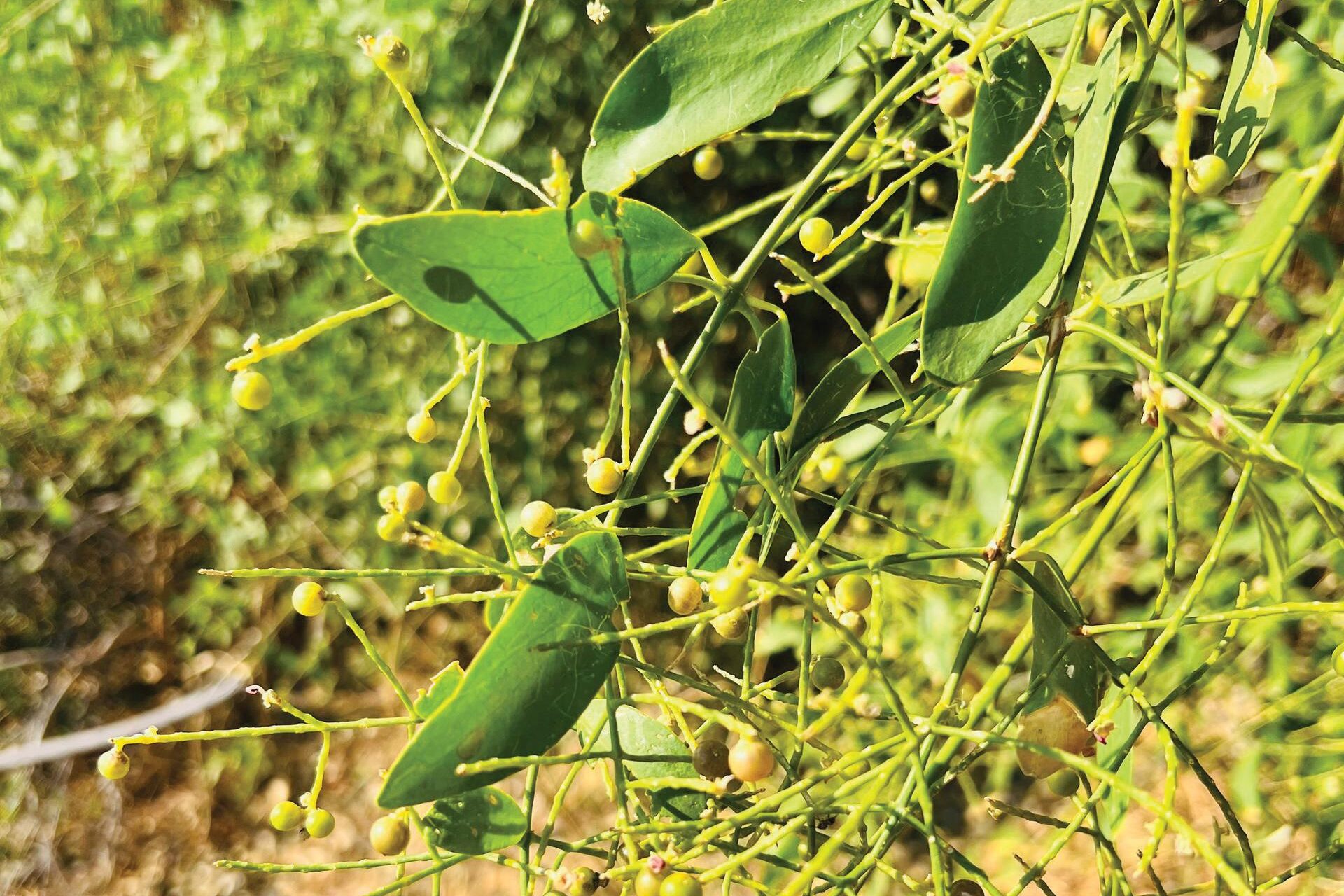Scientific name: Salvadora Persica
Common name: Mustard bush
It is probably too early to conclude that we are facing another dry spell. The early rainfall in September and October 2024 offered a pleasant reprieve when landscapes looked bright and green. I loved the sight of the mopane trees as soon as I stepped outside our village homestead. It felt as if the rainfall had officially arrived, but just a few weeks down the line and temperature scores were higher than the rainfall recorded. Suddenly the nights became silent, engulfed by the chorus of crickets and the skies remained star-studded.
Regardless of these dry and inconsistent weather patterns, some trees continue to thrive. Every year, in celebration of Arbor Day, a tree indigenous to Namibia is chosen as the tree of the year. In 2024, this accolade was bestowed upon the mustard tree, an evergreen tree with several stems often entangled into other tree stems and branches. This dense bush is not always immediately visible in its surroundings, as it often grows near other trees, enabling it to entangle itself into its neighbours. It has pale brown bark with a rough surface and it can reach a height of up to 4 metres and a width of around 5-6 metres. Owing to its crown often overlapping, it is commonly referred to as a bush, although it qualifies to be categorised as a tree.
The mustard bush is easily recognised due to its bright green leaves which sometimes appear as if they have shades of yellow. These succulent leaves are smooth, flat and hairless with a yellow-white midrib. While the leaves of the mustard bush are generally browsed by livestock, it is more popular during droughts.
The mustard bush usually flowers from July to October. Its flowers are tiny, yellowish green and very similar to those of the bird plum tree. Interestingly, the mustard bush can flower and fruit throughout the year, bearing clear or transparent circular drupes that turn dark red to mauve as they ripen.
The fruit of the mustard bush does not have much flesh, but it is edible, leaving a rather sweet-sour taste in your mouth. Some birds find this to be the perfect snack on an ordinary day. The young branches of the mustard bush are known to serve as toothbrushes – a remedy I have used several times – as it relieves the teeth from plaque, leaving your teeth feeling smooth and your mouth refreshed.
This versatile bush can be spotted in varying weather conditions in northern Namibia as well as along the coastal areas of the Namib Desert. Whilst the northern weather can range from extremely hot to extremely cold – including droughts and floods – the desert has more extreme high temperatures throughout. One can only marvel at the diverse resilience of the mustard bush.
Agnes Shekupe Shivute







